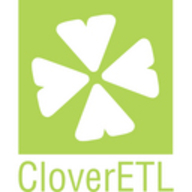

Tableau and CloverETL operate in the realm of data management, focusing on visualization and integration respectively. Tableau has a competitive edge due to its user-friendly design and appealing pricing, whereas CloverETL's prowess in data transformation is beneficial for those with complex data needs.
Features: Tableau is equipped with advanced visualization tools, intricate dashboards, and interactive reporting options. It simplifies user experience through drag-and-drop functionality. CloverETL excels with comprehensive data integration and transformation abilities, and it is geared towards handling intricate data scenarios with its robust data manipulation engine.
Ease of Deployment and Customer Service: Tableau promises a simple deployment process complemented by extensive online support resources. Its user-friendly installation makes it accessible to a broad audience. CloverETL, though requiring more technical knowledge during deployment, ensures dedicated support throughout the implementation phase, catering to advanced configuration needs.
Pricing and ROI: Tableau offers a lower initial setup cost and user-friendly licensing, which facilitates quick ROI. CloverETL, with possibly higher upfront costs due to its complexity, provides substantial ROI for organizations with significant data integration demands, making it a valuable investment for detailed data processes.

Tableau is a tool for data visualization and business intelligence that allows businesses to report insights through easy-to-use, customizable visualizations and dashboards. Tableau makes it exceedingly simple for its customers to organize, manage, visualize, and comprehend data. It enables users to dig deep into the data so that they can see patterns and gain meaningful insights.
Make data-driven decisions with confidence thanks to Tableau’s assistance in providing faster answers to queries, solving harder problems more easily, and offering new insights more frequently. Tableau integrates directly to hundreds of data sources, both in the cloud and on premises, making it simpler to begin research. People of various skill levels can quickly find actionable information using Tableau’s natural language queries, interactive dashboards, and drag-and-drop capabilities. By quickly creating strong calculations, adding trend lines to examine statistical summaries, or clustering data to identify relationships, users can ask more in-depth inquiries.
Tableau has many valuable key features:
Tableau stands out among its competitors for a number of reasons. Some of these include its fast data access, easy creation of visualizations, and its stability. PeerSpot users take note of the advantages of these features in their reviews:
Romil S., Deputy General Manager of IT at Nayara Energy, notes, "Its visualizations are good, and its features make the development process a little less time-consuming. It has an in-memory extract feature that allows us to extract data and keep it on the server, and then our users can use it quickly.
Ariful M., Consulting Practice Partner of Data, Analytics & AI at FH, writes, “Tableau is very flexible and easy to learn. It has drag-and-drop function analytics, and its design is very good.”
We monitor all Data Visualization reviews to prevent fraudulent reviews and keep review quality high. We do not post reviews by company employees or direct competitors. We validate each review for authenticity via cross-reference with LinkedIn, and personal follow-up with the reviewer when necessary.